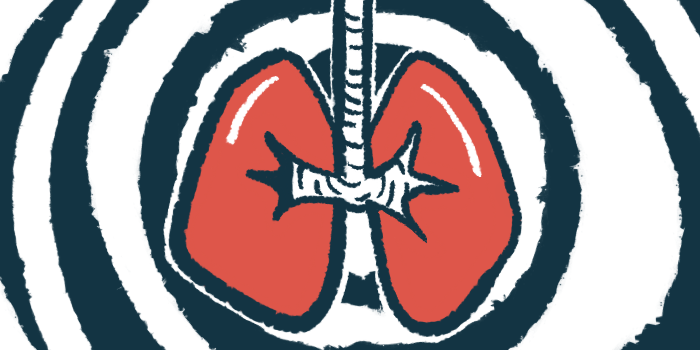P. aeruginosa Can Resist Tobramycin via Clumping and Sugar Molecule
Study into changes to bacteria after antibiotic's use in children with CF
Written by |

Pseudomonas aeruginosa bacteria can become resistant to the antibiotic tobramycin by clumping into more and larger aggregates and making more of a protective sugar molecule called Psl, a study reported.
It used samples of sputum from a small group of children with cystic fibrosis (CF) who received inhaled tobramycin to treat a new P. aeruginosa infection.
“To our knowledge, this study is the first to demonstrate that children with CF who fail to eradicate new-onset P. aeruginosa infection with tobramycin therapy are infected with more numerous, larger aggregates of P. aeruginosa expressing increased Psl,” the researchers wrote.
The study, “Pseudomonas aeruginosa aggregation and Psl expression in sputum is associated with antibiotic eradication failure in children with cystic fibrosis,” was published in the journal Scientific Reports.
Antibiotic fails to treat new P. aeruginosa infection in 4 with cystic fibrosis
Mucus in people with CF is thick and sticky, clogging the airways and making breathing harder. It also traps germs such as bacteria, so that infections are more likely.
Antibiotics help fight off bacteria posing new or known threats by killing the bacteria or by making it hard for them to grow in number. But some bacteria have developed ways to resist this treatment.
P. aeruginosa, the most common type of bacteria infecting the lungs of people with CF, can go through a number of changes that enable them to adapt during the course of an infection.
In previous work, researchers in Canada and the U.S. found that P. aeruginosa isolates from children whose antibiotic use failed to eradicate an infection had greater binding to anti-Psl antibodies compared to those who cleared the infection. Psl, a complex sugar molecule, is a key component of the biofilms that certain bacteria, including P. aeruginosa, create to protect themselves from a person’s immune response and from antibiotics.
Tobramycin belongs to a group of antibiotics known as aminoglycosides. It works by blocking the production of proteins that P. aeruginosa need to build cell walls. Without proper cell walls, the bacteria eventually die.
Aiming to validate their previous findings, the researchers visualized P. aeruginosa biofilms in sputum collected from 11 children (six girls and five boys) being treated at the Hospital for Sick Children in Toronto for a new P. aeruginosa infection. All had tested negative for the bacteria at least three times over the previous year.
Sputum samples were collected before the children began a 28-day course of inhaled tobramycin.
A second inhaled tobramycin course was given to children testing positive for P. aeruginosa one week after finishing the first course. Those who continued to test positive then received intravenous (into-the-vein) tobramycin and ceftazidime, another antibiotic, for two weeks at the hospital, followed by an additional 28 days of inhaled tobramycin.
Children with positive findings of infection six months after the first finding were considered to have persistent P. aeruginosa.
Of these 11 patients, four had a persistent infection and seven had cleared or eradicated the bacteria after one month of inhaled tobramycin.
To directly view the bacteria, the researchers used a technique called microbial identification passive clarity technique (MiPACT). It revealed that persistent P. aeruginosa grew significantly more and with a greater number of larger aggregates than did the tobramycin-susceptible bacteria.
For comparison, sputum was collected from children with CF who had never been infected with P. aeruginosa (a negative control group) and those known to have chronic P. aeruginosa infection (positive control group). Negative control samples showed no aggregates of the bacteria, while positive controls showed fewer or smaller aggregates.
Psl, a protective molecule, at high amounts in those with persistent infection
Higher amounts of Psl also were found in the four children who developed persistent P. aeruginosa infection than in the seven whose infection was eradicated. No Psl was found in negative control samples, whereas the amount of Psl in positive control samples was similar to that of children with a persistent infection.
“Children with CF who failed to eradicate P. aeruginosa respiratory infection with inhaled tobramycin were infected with Psl-expressing P. aeruginosa that form more numerous and larger aggregates than in those who successfully clear their infection,” the researchers wrote.
But when the researchers grew the bacteria as biofilms on a glass slide in the lab, they were unable to obtain similar results.
“These groups of patients could not reliably be distinguished using standard in vitro [lab] methods, highlighting the need for direct visualizations of infections within airways to predict antibiotic response in CF,” they concluded.







